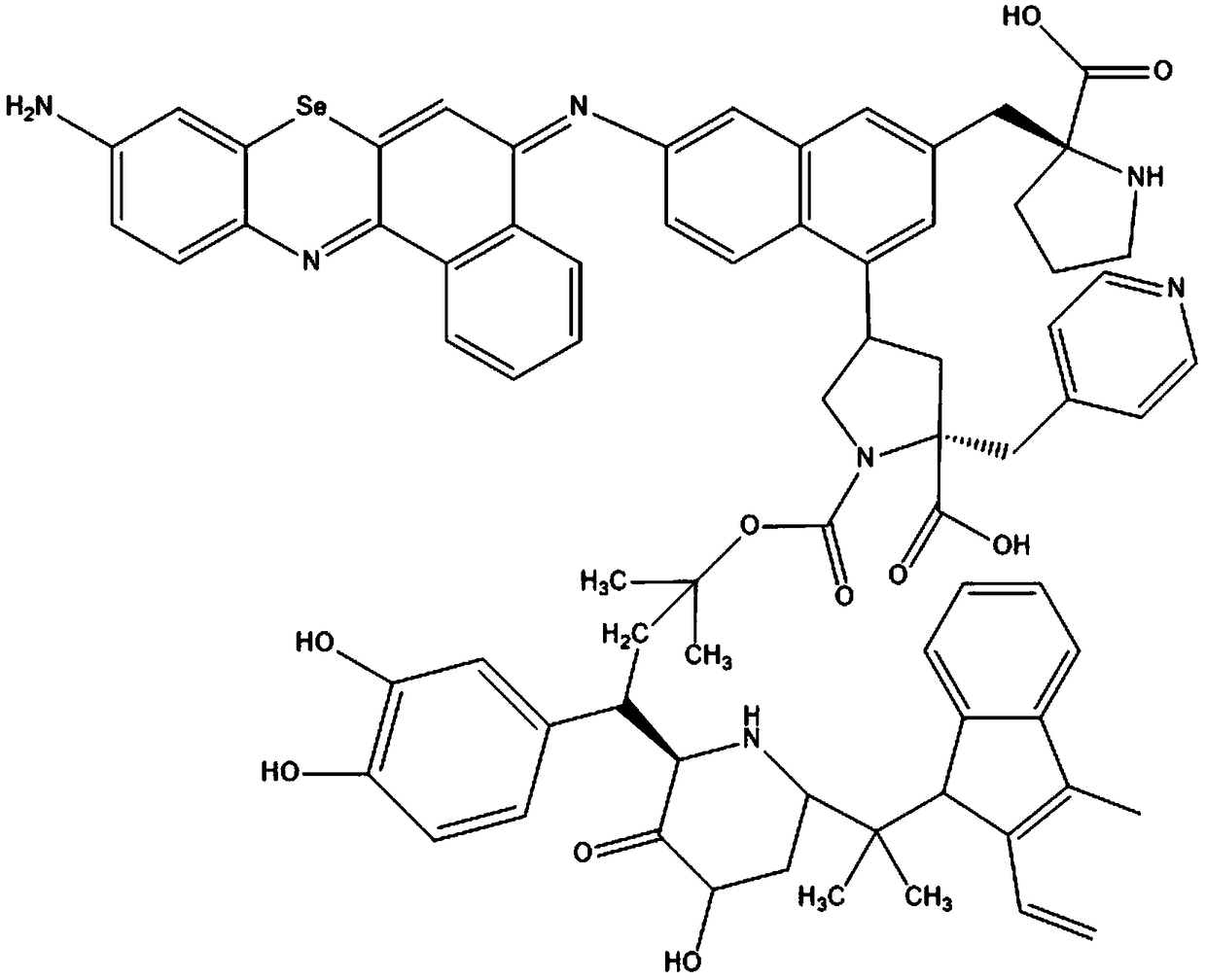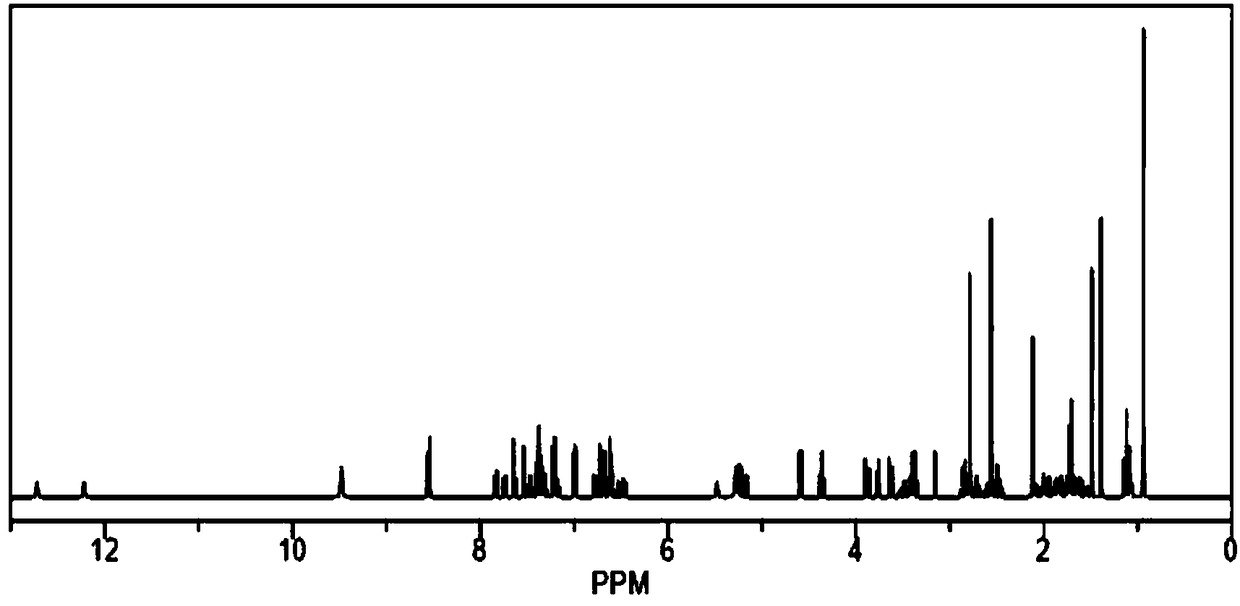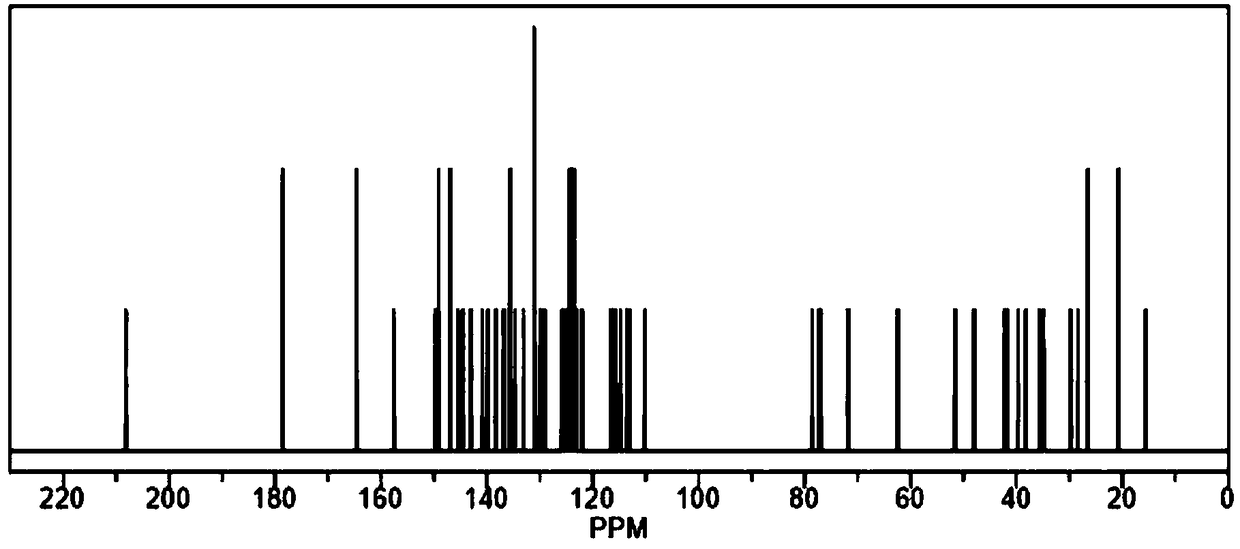Biological photosensitizer, and preparation method and application thereof
A photosensitizer and biological technology, applied in the field of biomedicine, can solve the problems of patients' heavy physical and mental burden, and achieve the effect of promoting skin repair, efficient and fast killing, and promoting tissue healing.
- Summary
- Abstract
- Description
- Claims
- Application Information
AI Technical Summary
Problems solved by technology
Method used
Image
Examples
Embodiment 1
[0038] Embodiment 1: the synthesis of EtNBSe-PDT
[0039] To prepare intermediate product A, the reaction conditions are: heating to a temperature of 70-100°C for 16-24 hours in an organic solvent containing an inorganic base, wherein the molar ratio of the two reactants is 1:1.
[0040] The reaction scheme is as follows:
[0041]
[0042] To prepare intermediate product B, the reaction conditions are: in benzene solvent, 50-60 degrees Celsius, and the molar ratio of the two reactants is 1:4-4.5. The reaction scheme is as follows:
[0043]
[0044] Preparation of EtNBSe-PDT: The intermediate product A obtained in step (1) and the intermediate product B obtained in step (2) are reacted to obtain the final product, wherein the molar ratio of the two reactants is 1:3.2-4.5, and the reactant Use ethanol with a volume of 200-300 times as a solvent, heat and reflux for 24-48 hours under the protection of argon, after the reaction is completed, cool to room temperature, remov...
Embodiment 2
[0045] Example 2: EtNBSe-PDT causes apoptosis in epithelial cancer Example
[0046]Annexin V is a reagent for detecting cell apoptosis. In normal cells, phosphatidylserine is only distributed on the inner side of the lipid bilayer of the cell membrane. In the early stage of cell apoptosis, the membrane phosphatidylserine (PS) is turned from the inner side of the lipid membrane to outside. Therefore, Annexin V is a sensitive indicator for detecting early cell apoptosis. PI (propidium iodide) is a nuclear staining reagent that can stain DNA. Although PI cannot pass through the living cell membrane, it can pass through the damaged cell membrane and stain the nucleus. Therefore, the combination of Annexin V and PI can stain live and dead cells at the same time. According to flow cytometry analysis, under the action of EtNBSe-PDT, the number of apoptotic cells increased significantly compared with the blank group, which proved that EtNBSe-PDT can induce tumor cell apoptosis to ac...
Embodiment 3
[0052] Embodiment 3: EtNBSe-PDT inhibits Wnt signal embodiment
[0053] The Wnt signaling pathway mainly refers to the classic Wnt signaling pathway mediated by β-Catenin. When there is no Wnt signal, GSK3β can add a phosphate group to the serine / threonine residue at the N-terminal of β-Catenin, and the phosphorylated β-Catenin is covalently modified by β-TRCP ubiquitination, and is released by the proteasome ( proteasome) degradation. However, PP2A dephosphorylated GSK3β in the Wnt pathway, which can significantly promote Wnt signaling. Therefore, whether Wnt signaling is activated can be directly understood by measuring the phosphorylation status of GSK3β, β-Catenin and PP2A. As a highly conserved signaling pathway in evolution, the Wnt signaling pathway plays an important role in various biological processes such as growth, development, metabolism and stem cell maintenance, and is closely related to tumor growth. According to the analysis of Western Blot results, in EtNBS...
PUM
 Login to View More
Login to View More Abstract
Description
Claims
Application Information
 Login to View More
Login to View More - R&D
- Intellectual Property
- Life Sciences
- Materials
- Tech Scout
- Unparalleled Data Quality
- Higher Quality Content
- 60% Fewer Hallucinations
Browse by: Latest US Patents, China's latest patents, Technical Efficacy Thesaurus, Application Domain, Technology Topic, Popular Technical Reports.
© 2025 PatSnap. All rights reserved.Legal|Privacy policy|Modern Slavery Act Transparency Statement|Sitemap|About US| Contact US: help@patsnap.com



